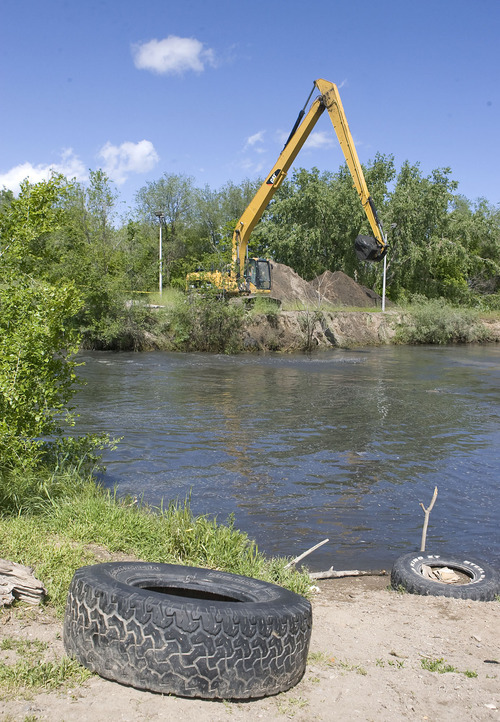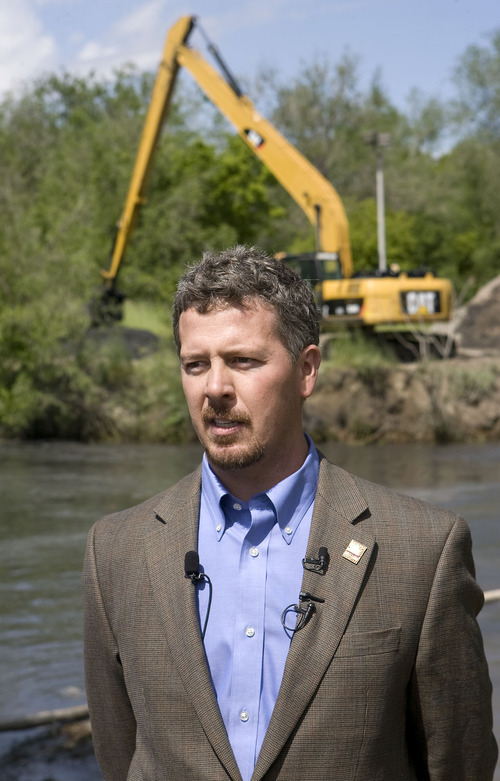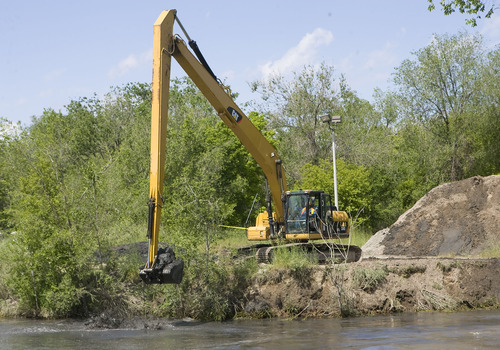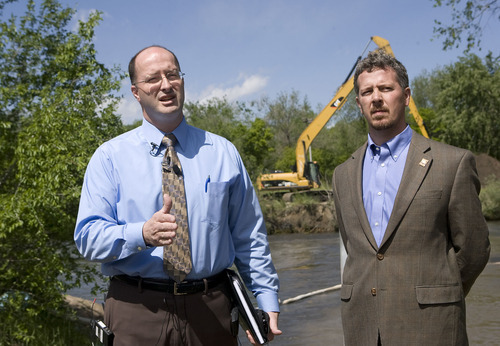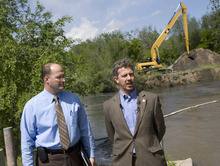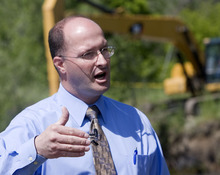This is an archived article that was published on sltrib.com in 2011, and information in the article may be outdated. It is provided only for personal research purposes and may not be reprinted.
Scott Baird, Salt Lake County's director of flood control, can't predict where it will flood. But he's pretty sure it will — and soon.
"We had an unusual spring to put us in this situation," he said Thursday of record precipitation and snowpack. "And we'll have to have an unusual summer to get out of this without flooding."
With 80-degree temperatures forecast for valley locations this weekend and through Monday, the long-awaited runoff could be at hand, said Brian McInerney, hydrologist with the National Weather Service.
"That should spur the rivers on," he said of the forecast for dry, warm weather.
The Weber River is the most prone to flooding this year, McInerney said. But if temperatures go above normal, flooding could occur along Little Cottonwood Creek and City Creek in Salt Lake County, he said.
Like everyone else in northern Utah, Baird and Salt Lake County crews have been waiting through a prolonged cold, wet spring for the huge mountain snowpack to melt. But they haven't been waiting idly, Baird said.
Last year's June flooding along Big and Little Cottonwood creeks was a wake-up call for Salt Lake County, Sandy and Murray and residents living along those waterways, Baird said.
"Every piece of [flood] preparation we could think of, we've put in place," he said. "And we're ready to go. We're anticipating a high runoff."
The wild card in spring flooding is debris clogging channels, Baird said. With the exception of bridges, it's impossible to predict where such dams could occur.
Debris basins were installed along City Creek after the 1983 flood. But Big and Little Cottonwood creeks have no such basins. Salt Lake County crews are patrolling creeks and have equipment ready to clear clogs, Baird said.
"Our major effort is to clear debris," he said. "We'll have crews rotating around the clock."
As part of flood control efforts, the county is dredging the Jordan River to allow maximum flows. This week, county crews are removing silt from the channel at 1300 South, where water from Red Butte, Emigration and Parleys creeks enters the Jordan.
Salt Lake County oversees City Creek and Emigration Creek in conjunction with Salt Lake City. The county also has jurisdiction over Big and Little Cottonwood creeks, as well as the Jordan River.
But the state Division of Water Rights determines, to some extent, the flow from Utah Lake into the Jordan River.
According to a March 1985 court order, when flows in the Jordan River reach 3,400 cubic feet per second at 2100 South, head gates at Utah Lake are regulated to keep the river from going higher, said state water engineer Kent Jones.
That also pushes Utah Lake higher.
Since 1985, however, the Jordan River has never reached the flow that would activate the court order.
"My guess is this year, with all the snowpack we have, that will kick in," Jones said.
Help for flood preparation
Salt Lake County Emergency Management Information:
Website • http://www.slcoem.org
Phone • 801-468-2711 —
More online
O Find more information on the threat of spring flooding. › sltrib.com/topics/utflood
O Watch a National Weather Service flood briefing • http://1.usa.gov/kRq9xe



